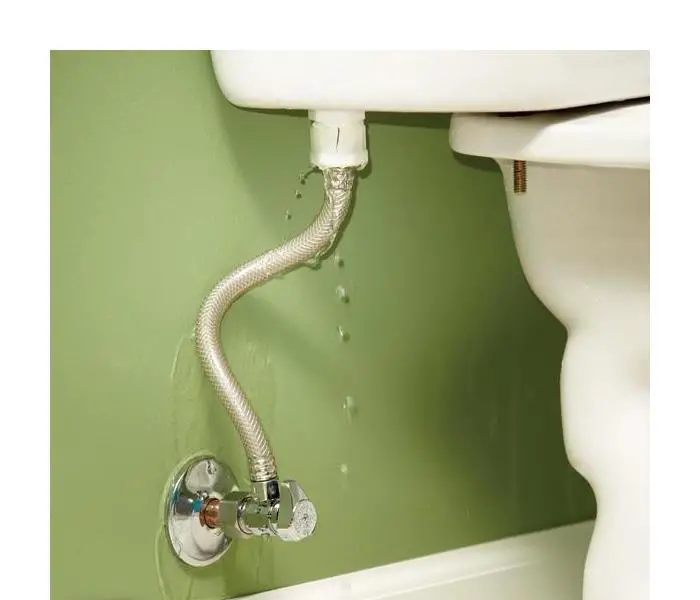How To Keep Toilet Pipes From Freezing [Easy DIY Solutions]

In the US, more than 250,000 families experience frozen and/or burst pipes each year, and it is estimated that anywhere from 11% to 20% of homeowner insurance claims are due to water damage and freezing. In fact, frozen pipes and frozen pipe related water damage can result in insurance claims costing over $7,000.
With this in mind, it is imperative to prevent toilet pipes from freezing. Luckily, preventing your toilet pipes from freezing is super easy. All you need to do is pour plumber’s anti-freeze into the empty toilet tank and flush it down the system.
To find out more about this toilet winterizing technique as well as two other techniques, read on.
 Winterizing your toilet and its pipes is a little different from winterizing other parts in your home. The reason for this is that toilets have a ballcock control, which lets water into the tank. To effectively prevent the pipes from freezing, you have to consider the ballcock.
Winterizing your toilet and its pipes is a little different from winterizing other parts in your home. The reason for this is that toilets have a ballcock control, which lets water into the tank. To effectively prevent the pipes from freezing, you have to consider the ballcock.
The best way to keep toilet pipes from freezing is by using plumber’s anti-freeze. Just as you would prevent your car’s radiator from freezing by using an automotive anti-freeze, you can prevent your toilet and its pipes from freezing by using anti-freeze as well. Of course, the anti-freeze that you put in your toilet is different from the anti-freeze you use in your car.
Here is what you’ll need:
Here’s how to keep toilet pipes from freezing using plumber’s anti-freeze:
The first step of winterizing your toilet is completely draining the water from the tank. To do this, all you need to do is hold the flush handle down while the system is completely charged. As you hold the handle down, the water will drain out of the tank until air starts pumping through the pipes.
This air will clean out the ballcock. Hold down the handle until all the water has left the tank. Once the tank is empty, release the handle, and shut off the valve.
The next step is to put on protective goggles. Anti-freeze can be very dangerous to your delicate eyes. So, it is imperative to protect your eyes in the case that any liquid splashes out of the tank.
Once the tank is empty and your eyes are protected, it is time to add plumber’s anti-freeze to the tank. Make sure that you have selected a non-toxic anti-freeze that is designed for plumbing systems specifically. Pour the anti-freeze into the tank, not the toilet bowl. Hold down the toilet handle again to flush the anti-freeze into the bowl and drain the system.
Once you have held the handle down, all the water should be cleared from the water lines. At this point, you should winterize the drainage lines. More specifically, you will need to winterize the trap.
The trap prevents sewer gases from entering the home by blocking it with constantly held water. There will be a trap underneath the drain of each sink. Go to each sink and pour about ½ cup of plumber’s anti-freeze down the drain.
Check that the water heater is on and disconnect the compressor.
Here are some other ways to prevent your toilet pipes from freezing:
Another way to keep toilet pipes from freezing is to add insulation around any exposed water pipes. This freezing prevention technique is easy enough for anyone to perform and costs very little.
You want to add insulation to pipes that are located in unheated spaces. Exterior walls, unheated garages, floor cavities above unheated crawl spaces, and unheated attics are common places to find exposed water pipes.
There are several ways that you can insulate exposed pipes. The most popular choice is adding a foam pipe sleeve to the outside of the pipe. This option is inexpensive and super easy to perform. Choose a pipe sleeve that is suitable for high temperatures.
You can also insulate exposed pipes with strips of pipe wrap. Pipe wrap may come in the form of flexible foam, foam and foil, bubble film, or rubber. Begin by duct taping one end of the insulation to the pipe. Then, wrap the insulation around the entire pipe, making sure that no areas are exposed. Finally, tape the end of the insulating strip in place.
Another way to keep toilet pipes from freezing is by installing electrical heat cables. Electrical heat cables are nifty little devices that will plug into a standard 120V outlet and automatically heat the pipes if they drop below a certain temperature. Whenever you no longer need your electrical heat cable, you simply unplug it and store it until next fall.
To use electrical heat cables, all you need to do is follow the directions that come with them. Most of the time, the cables are extremely easy to work with and the directions are clear.
Additionally, you will need electrical tape to attach the heat cable to the pipe. Make sure that whatever tape you choose has an appropriate heat rating. The heating cable you choose should list it’s required heat rating.
Frozen pipes can be dangerous and cause major damage to your property. Here’s what can happen when pipes freeze:
Here are some things to look out for to tell if your pipes are frozen:
Correct Temperature: Pipes cannot freeze unless the temperature is correct. Whenever the temperature drops below 32 degrees Fahrenheit, begin to take precautions to prevent your pipes from freezing.
Frost on the Pipe: Some pipes, such as those under your sinks, can be seen with your own eyes. If you see any frost on the exterior of the pipe, it is normally a warning sign that the pipe is frozen.
Strange Smells: Another sign of a frozen pipe is an odd smell coming from the faucet or drain. The reason for this is that the frozen area will force odors to escape up towards the direction of your property instead of down through the plumbing.
No Water Comes Out of the Faucet: If you turn on a faucet and there is only a slight trickle of water or no water flow at all, your water pipe may be frozen.
What Do You Do if Your Pipes Freeze?
If your pipes are frozen, it is important to act quickly in order to thaw out the pipe before any damage ensues. If you are comfortable thawing the pipe yourself, you can use space heaters or hairdryers to thaw out the frozen pipe.